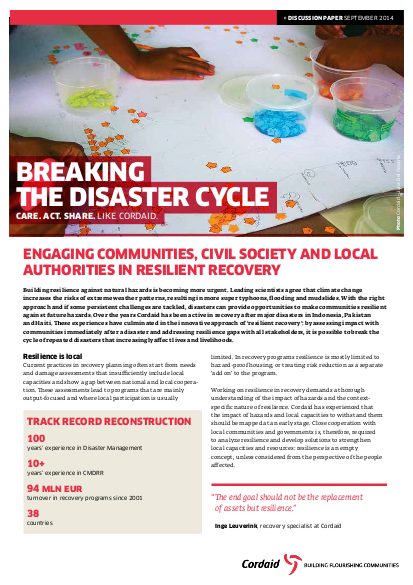
Building resilience against natural hazards is becoming more urgent. Leading scientists agree that climate change increases the risks of extreme weather patterns, resulting in more super typhoons, flooding and mudslides. With the right approach and if some persistent challenges are tackled, disasters can provide opportunities to make communities resilient against future hazards. Over the years Cordaid has been active in recovery after major disasters in Indonesia, Pakistan and Haiti. These experiences have culminated in the innovative approach of ‘resilient recovery’: by assessing impact with communities immediately after a disaster and addressing resilience gaps with all stakeholders, it is possible to break the cycle of repeated disasters that increasingly affect lives and livelihoods.
Current practices in recovery planning often start from needs and damage assessments that insufficiently include local capacities and show a gap between national and local cooperation. These assessments lead to programs that are mainly output-focused and where local participation is usually limited. In recovery programs resilience is mostly limited to hazard-proof housing, or treating risk reduction as a separate ‘add on’ to the program. Working on resilience in recovery demands a thorough understanding of the impact of hazards and the context-specific nature of resilience. Cordaid has experienced that the impact of hazards and local capacities to withstand them should be mapped at an early stage. Close cooperation with local communities and governments is, therefore, required to analyze resilience and develop solutions to strengthen local capacities and resources: resilience is an empty concept, unless considered from the perspective of the people affected.
